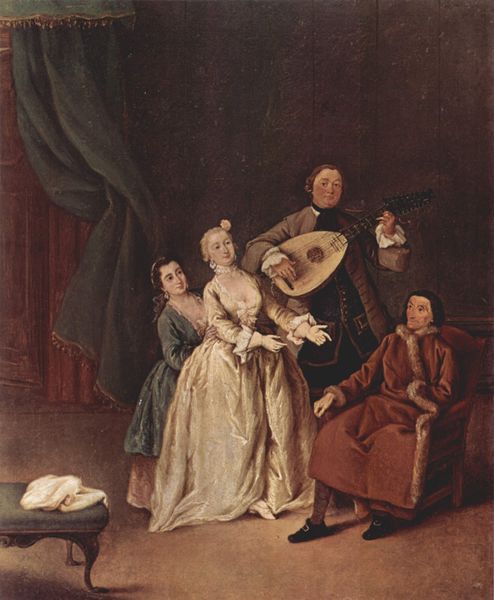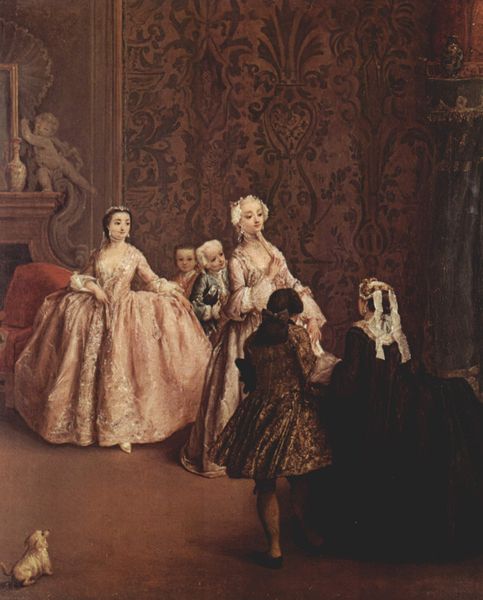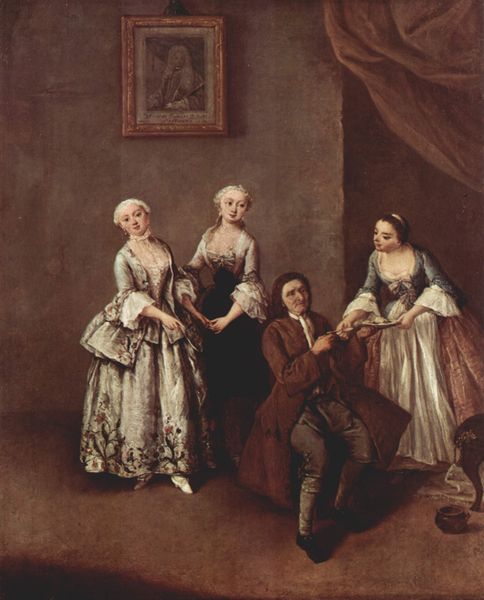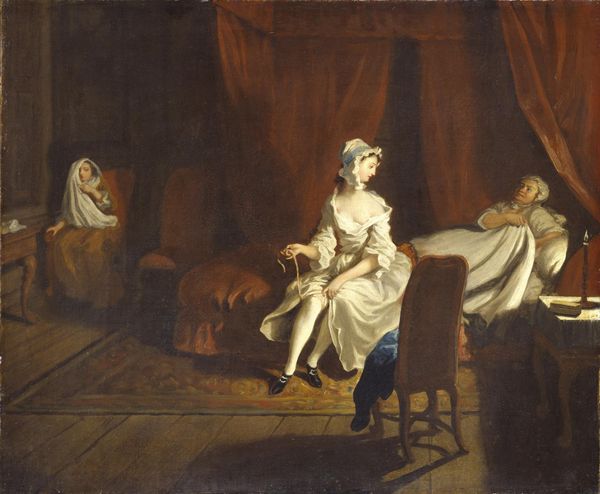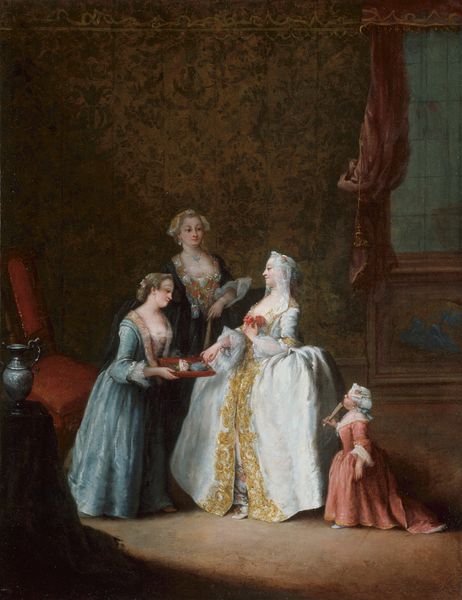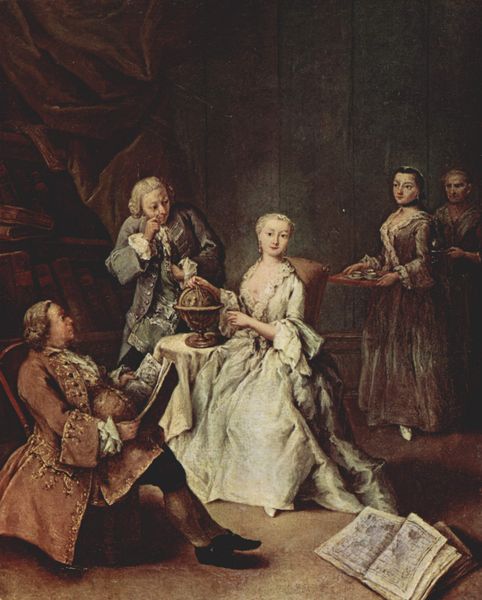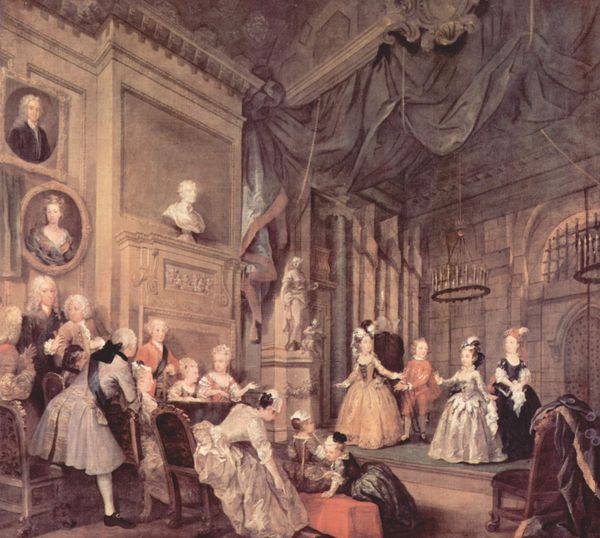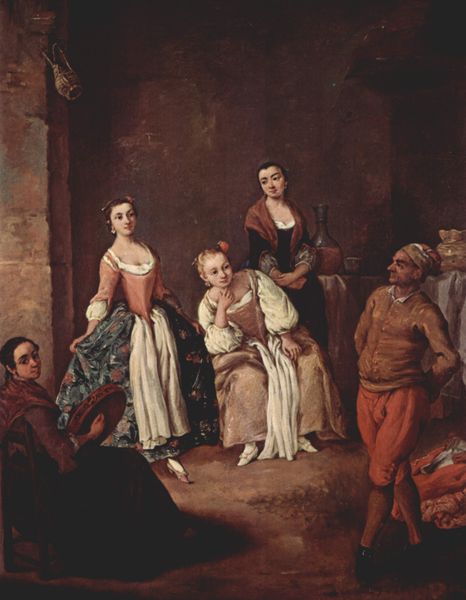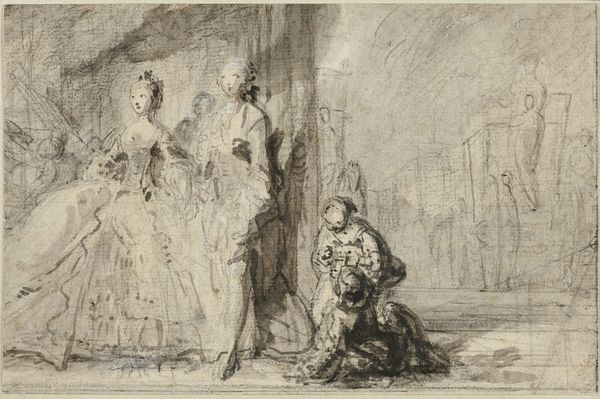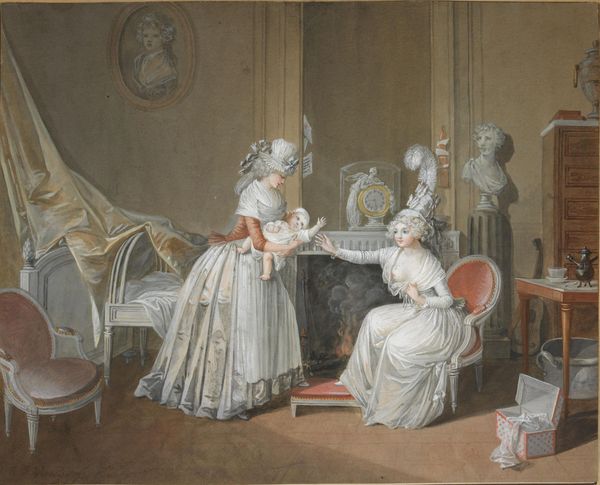
#
character art
#
sculpture
#
3d character model
#
sculptural image
#
possibly oil pastel
#
oil painting
#
underpainting
#
costume
#
green and neutral
#
warm toned green
Copyright: Public domain
Pietro Longhi’s painting, "The Dancing Lesson," captures a scene of aristocratic leisure with an arrangement of figures within a dimly lit interior. The composition is structured around a central female figure in a light-colored dress, which draws the eye immediately. Longhi uses a muted palette, but the textures of fabrics, the sheen of the violin, and the detailed rendering of faces create a rich visual experience. This focus on surface and texture is not merely decorative; it speaks to the values of the society Longhi depicts. The careful arrangement of figures in the room and the gaze of the characters reveal a complex network of social interactions. The act of dancing, then, becomes a semiotic marker, a form of communication and negotiation within the structured environment of 18th century Venice. Consider how Longhi's formal treatment of light and shadow destabilizes a straightforward reading of the scene. The muted tones and enclosed space contribute to a sense of ambiguity and complexity, inviting us to reflect on the performative nature of social rituals.
Comments
No comments
Be the first to comment and join the conversation on the ultimate creative platform.
